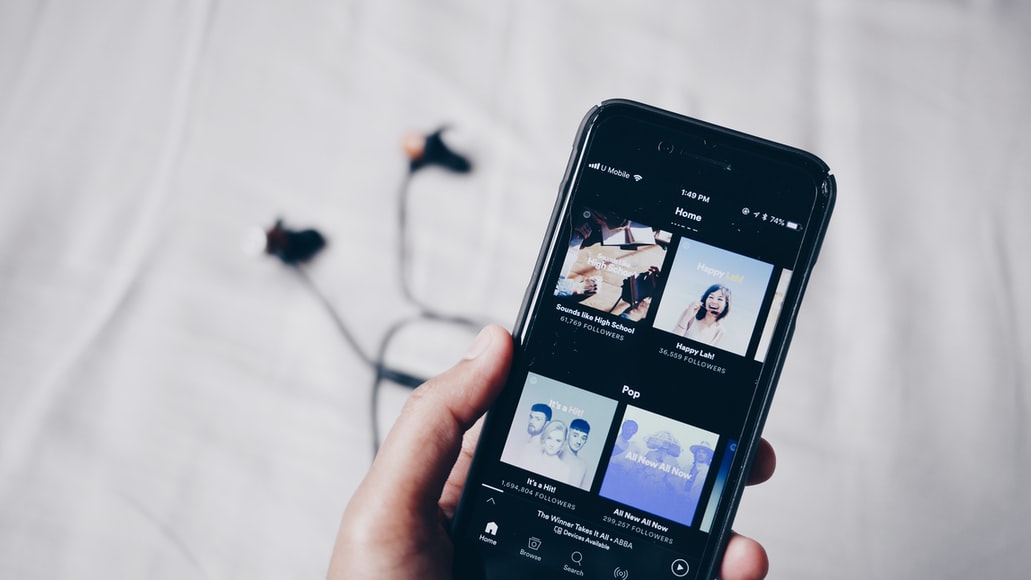Extreme levels of uncool mean I’d rather not remember the first and only album I ever bought aged 10. Although I can’t pretend much has changed there, those days were short-lived. Really, I’m from the era of iTunes, Apple Music and the faithful iPod Touch. Growing up, when it came to discovering and listening to music, Apple had my heart. It had my ears and my (read: sorry, my Dad’s) wallet too. I’d thought I was perfectly happy with this setup, until along came a real teenage dream; a little-known service called Spotify. Unlimited, on-demand music at my fingertips, all neatly packaged up into a monthly subscription. It was all rather exciting. It turns out others thought so too.
For consumers, music streaming ushered in a whole new era, and everything changed. It was a revelation, and still is. Spotify has over 150 million subscribers worldwide and is showing no signs of stopping. Goldman Sachs expects global music revenues to reach $142 billion by 2030. It’s there for the taking. Innovation is the name of the game, and the biggest platforms are competing to design the ultimate experiences for these consumers. But for better or for worse?
Behind the scenes, a subscription model means the ownership shifts, and artists lose out. What’s more, consumers have more control over the songs they choose to listen to, meaning top hits see a far higher fraction of revenue. The bottom 50% of streaming artists only receive around 14% of streaming revenue. As a result, there’s an immense reliance on live performances to generate more sustainable income streams for these artists. But – you guessed it – along came Covid-19. Shattering the music industry and the livelihoods of those who depend on it, artists saw an 80% drop in income over the course of the lockdowns. Meanwhile, Spotify’s valuation has almost doubled.
There’s an opportunity now to reimagine and rebuild more sustainable models that benefit the creators as much as the consumers, and of course the platforms that rely on them both. There’s a lot at stake. Without sufficiently supporting artists today, streaming services risk a collapse of the industry altogether.
And then there’s the audiences of tomorrow. As Rose pointed to in her blog last month, behaviours and attitudes towards music and entertainment platforms are changing. Younger listeners crave far more intimate and interactive experiences and are looking elsewhere, from the likes of TikTok and Instagram, to find it.
In the same vein, artists need more than consumers; they need fans. Whilst hugely innovative, music streaming has gone some way to suppress fandom in favour of consumption. At present, experiences are designed for discovery, but nothing much deeper than that. Music streaming services aren’t offering ways to convert idle consumers into genuine fans and help them to connect with artists on a more profound level. And I see that in the way I use Spotify. It’s transformed how I listen to music, which is often, to be honest, in a state of complete passivity. AirPods in, I shuffle my Discover Weekly before sliding my iPhone into my pocket and proceed to go about my day. I entrust curated playlists and algorithmic recommendations to do all the work. Even for tracks and artists I feel invested in, my experiences with them on Spotify are merely surface, or perhaps, ‘screen deep’.
In my eyes, it’s a very solo affair. And yet one that paradoxically doesn’t feel all that personal. In order to win, music streaming services need to focus their efforts on building communities for the next generation of fans. There is a clear opportunity for platforms to play more of an active role in helping listeners re-discover their personal agency, connect to artists in more participatory ways and in doing so, develop their fan bases.
It’s a win-win. By incentivizing fandom, platforms can incentivize audience investment in their favourite artists. We’re already seeing successful models beginning to capitalize on that gap. Take Patreon, a membership platform that connects fans to content creators, enabling them to offer financial support through a tiered monthly subscription in exchange for exclusive content. It’s already widely used by YouTubers, podcasters and writers to build more sustainable, reliable and consistent revenue streams and even includes tools for creators to communicate directly with their patrons too. Offering new and unique ways for consumers to invest in their favourite creators, streaming services should be paying attention.
Indeed, many are. Twitch’s partnership with SoundCloud is a prime example. Introduced towards the start of the pandemic, SoundCloud artists are able to make use of Twitch’s monetization tools far easier through an Affiliate status, whilst forming deeper connections with their fanbase. Again, like Patreon, Twitch offers a third payment model beyond subscriptions or advertising, by enabling supporters to make payments direct to artists themselves.
Nor can we ignore the growing influence of platforms like TikTok on the music streaming industry. Beyond simply consuming music, TikTok enables users to play an active part in content creation. Artists themselves are getting involved, capitalizing on new and innovative creative formats and a richer, more social means of connecting with their fans. Could this signal the future of music platforms?
Thanks to evolving technology and business model innovation, music streaming and subscriptions brought about a much-needed renaissance in the industry. It democratized access to music for the masses, but commodified this music in turn.
And so, the ecosystem is ripe for innovation once again. There’s a genuine need for new solutions that will uncover new revenue streams for artists and musicians and re-discover the power of fandom. Spotify may be well-placed to do this, but the space is there for taking. Who will be the first mover and bring music streaming to the next generation of fans?


